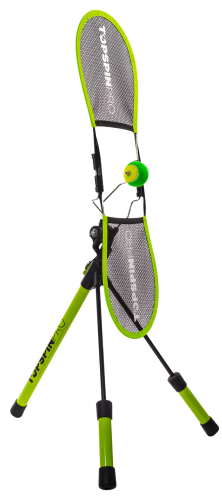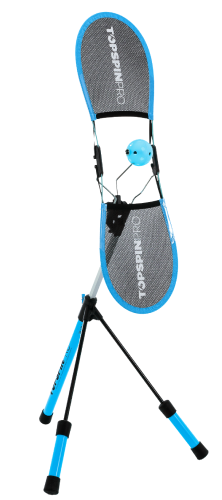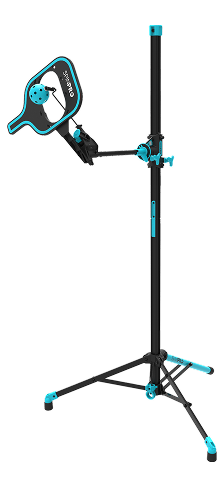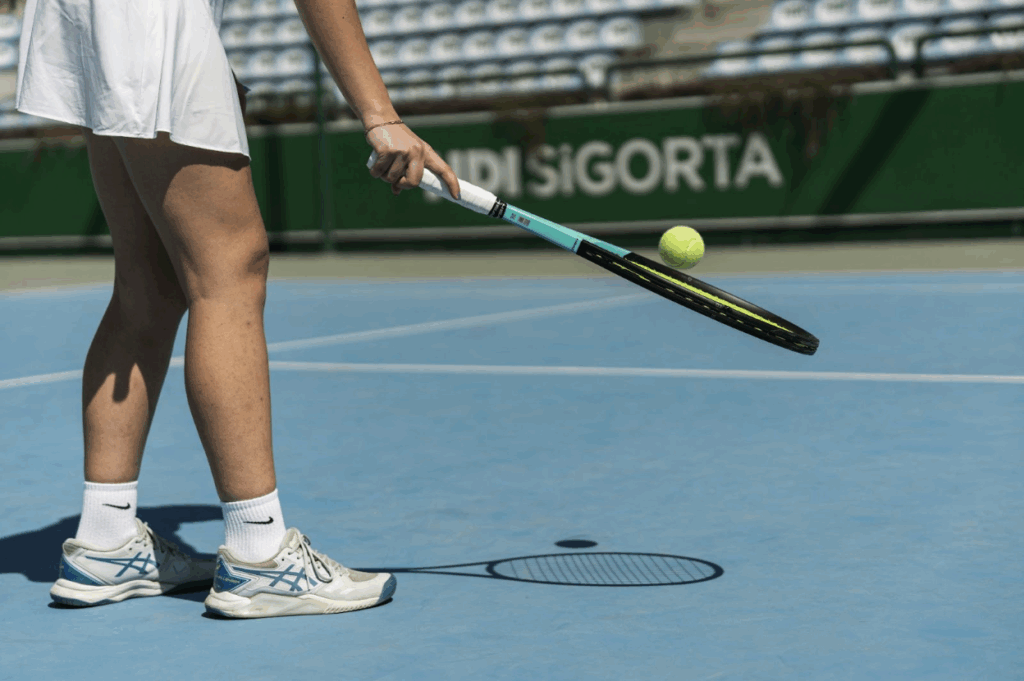Choosing the right tennis racket for your child can feel overwhelming. With so many brands, sizes, colors, and materials to sort through, not to mention the wide range of prices, it’s easy to feel unsure about where to start!
The racket your child starts with directly relates to how fast they pick up the game. If the racket is the wrong size or weight, it can throw off their timing and prevent them from using the correct technique.
So let’s have a look at some guidelines that can help you make the right choice when buying a racket.
You’ll also want to consider what stage of “Mini Tennis” they’re playing, since this determines the type of ball they use. The right racket should always match the type of ball to help your child progress comfortably and confidently. If the racket is too big for the stage of ball they are on or vice versa, then they will struggle to control it.
For an in-depth guide to mini tennis, see: A Parent’s Guide To Mini Tennis and Equipment
Racket Size
Size is one of the most important factors when choosing a racket.
A racket that is too long or heavy doesn’t just make the game harder; it can actually create long-term problems.
When a racket is too heavy, children are forced to compensate by adjusting their swing. This often leads to awkward mechanics, poor timing, and habits that can be difficult to correct later on.
In some cases, oversized or overly heavy rackets can also put strain on developing joints and muscles, raising the risk of injury.
The right racket, on the other hand, allows kids to swing freely and naturally. With equipment that fits their age and size, they can focus on building proper technique, spacing, contact point, and follow-through, without fighting against their racket. Choosing a racket that’s the right weight and length not only keeps tennis fun, it builds confidence, encourages healthy movement, and lays the foundation for long-term success on the court.
There are some general guidelines for age (total length of racket in inches):
RED - Age 4-6 - Racket up to size 23”
ORANGE - Age 7-9 - Racket size 23” to 25”
GREEN - Age 10-12 - Racket size 25” to 27”
YELLOW (Full Ball) - Age 11+ - Racket size 26” to 27” (27” is full size adult racket)
Every child is different, so it’s important to take into account their height, build, and physical development, not just their age, when choosing a racket.
How To Measure
The correct measurement of a racket for a junior player (under 11 or 12 years old) should be just long enough that it’s close to the floor but doesn’t quite touch. So, holding it down by their side, the racket head is sitting just above the floor.
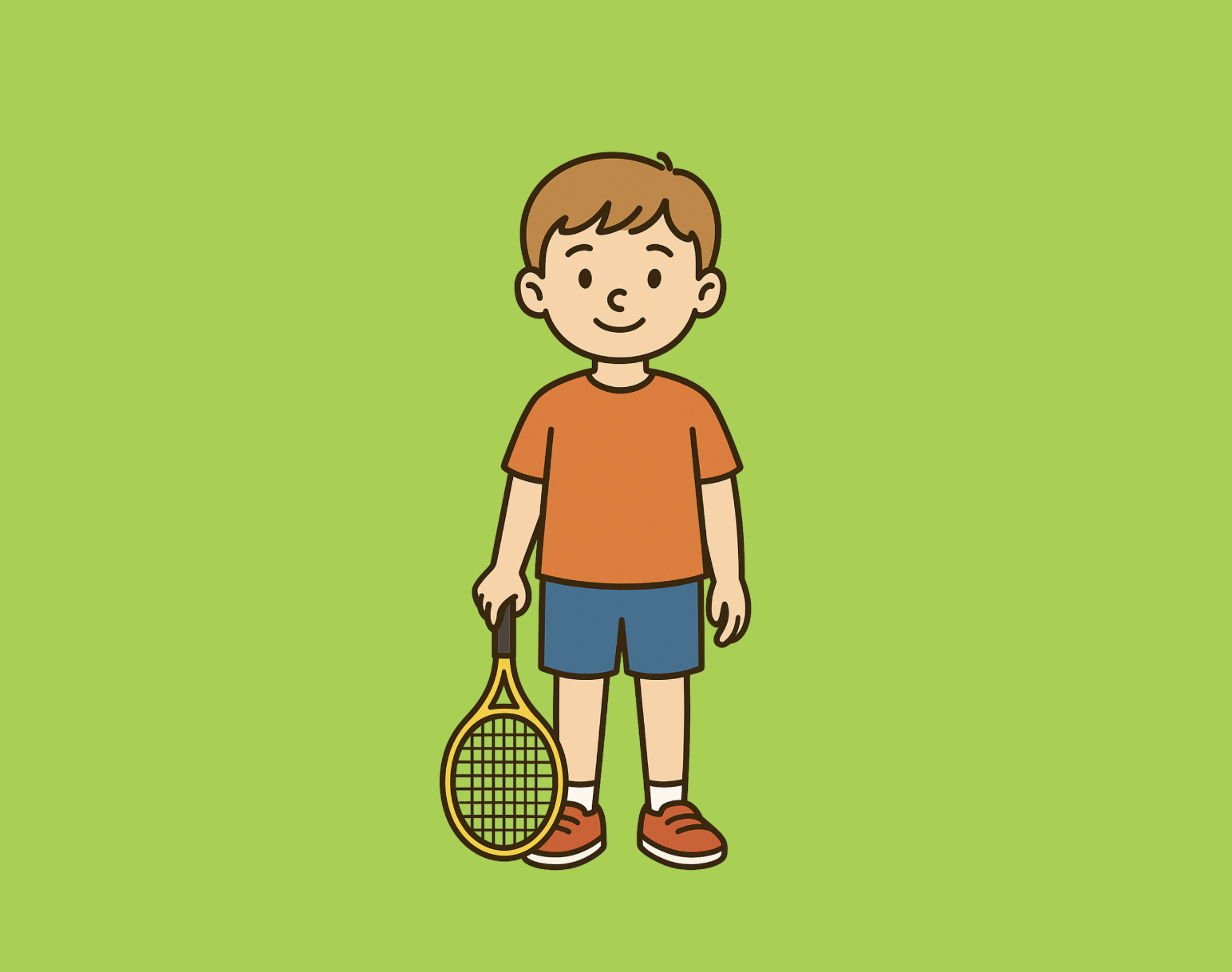
Racket Material
When it comes to junior rackets, the material makes a big difference in weight, durability, feel and also price! Most rackets for kids are made from one of two main types of material:
1. Aluminum Rackets
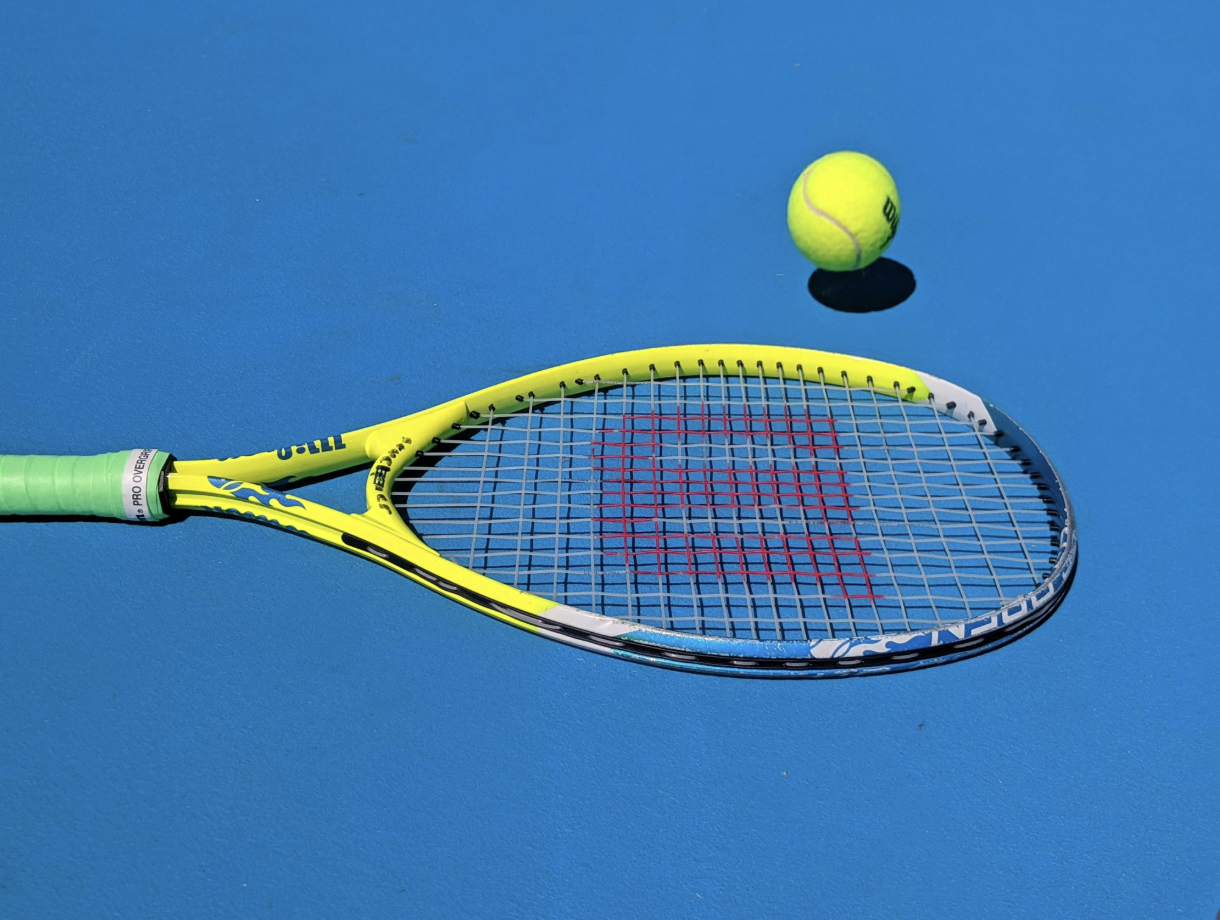
Aluminum tennis rackets have that classic “metal” look. You might even remember them from school sports lessons. They’re tough, inexpensive, and often end up a little bent or misshapen after being bashed on the ground! One easy way to spot an aluminum racket is by the plastic insert at the throat, since they’re not molded as one solid piece like higher-end rackets. They also have looser strings, which tend to be on the cheaper end.
These rackets are great for young children starting out and generally at the size 23” range and below. At this age, they are using light balls and basic technique. Once a child starts to get older and use heavier balls, they would benefit more from the stronger frame of a graphite racket.
2. Graphite Rackets
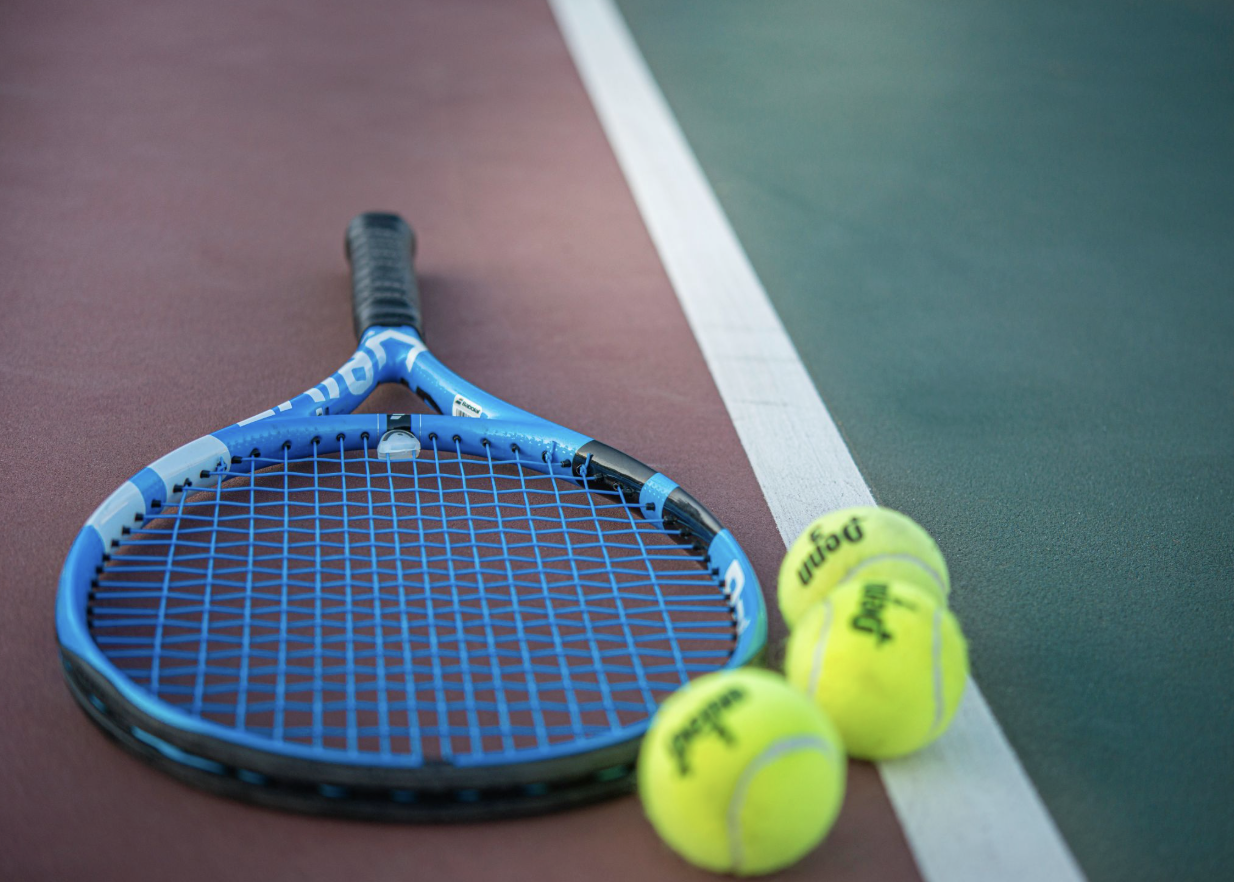
Graphite rackets look and feel like scaled-down versions of adult rackets, since they’re molded as a single solid frame. This design gives them a firmer feel and tighter string bed, making it easier for kids to learn more advanced skills like topspin and slice. Many graphite junior rackets are sold unstrung, which gives you the option to choose strings that best suit your child’s needs. Because of their tighter string tension and lighter material, graphite rackets are more prone to damage. If your child is very young or tends to be rough with their equipment, an aluminum racket may be the more practical choice.
How To Choose
Aluminium:
Best for: Young beginners or casual players.
Pros: Lightweight, affordable, and durable enough to handle being dropped or tossed around. They usually come pre-strung and ready to play.
Cons: Less power and control compared to higher-end rackets. They don’t absorb vibrations as well, so they can feel a little “fish net like” on contact.
Graphite:
Best for: Older kids or those already taking lessons and playing regularly.
Pros: Lighter, easier to swing, and provides better feel, power, and control. The graphite also absorbs more vibration, which is easier on developing arms and shoulders.
Cons: More expensive than aluminum, and not as rugged if the racket is banged around a lot.
Grip Size
Most junior rackets, until you get up to a size 26", come with a set grip size, so you don’t need to worry about that too much.
Once you have a choice, using a grip size 1 or 2 is best for most older juniors. It’s always best to choose smaller as you can always build up the size with overgrips as they grow. Here’s an easy way to measure. Place the hand on the grip and aim to have one index finger gap between the fingertips and the hand.

Or you can take a tape measure and measure from the center crease to the end of the ring finger. That measurement will then be the grip size:
SIZE 0 - 4 inches
SIZE 1 - 4-1/8 inches
SIZE 2 - 4-1/4 inches
SIZE 3 - 4-3/8 inches
SIZE 4 - 4-1/2 inches

Price
Prices for junior rackets can vary widely. Smaller aluminum models often start around $20, while larger graphite rackets can run into the hundreds. It’s natural for parents to lean toward the less expensive option, but it’s worth remembering that equipment makes a big difference. If you were trying to win a Formula One race, you wouldn’t choose a Fiat 500, and the same principle applies here. The right racket is a tool for learning. Investing in better quality gives your child the best chance to improve, play comfortably, and enjoy the game
How Much To Spend?
There are a couple factors to take into account:
- Age of Your Child - If you have a young child who is just starting out or may go through multiple tennis rackets as they grow then go cheaper. If your child is older and may use the same size racket for several years then it’s perhaps worth the investment in a more expensive one.
- Ability of Your Child - If your child is regularly competing, even if they are younger, then it’s worth the investment in a better graphite racket that suits their game and progress.
- Brand - Children tend to have favorite players or tennis brands so that also often has to be taken into account!
Strings
Like with grips size, most junior rackets come with the same strings until you get to a size 26. Pre strung rackets are fine for most juniors. If you do have a choice when you buy it there are a few types of string to choose from. Don’y just go for the color that matches the racket etc.
Nylon (Synthetic Gut)
Nylon strings are the most common option and come pre-installed in most junior rackets. They’re soft, forgiving, and provide a nice blend of comfort and playability. For kids just starting out, nylon is ideal because it’s gentle on developing arms and wrists while still offering good control. It’s also budget-friendly and easy to replace when needed.
Polyester
Polyester strings are stiffer and built for advanced players who swing fast and generate lots of power. They’re durable and excellent for producing spin, but they’re also harsher on the arm. For juniors, polyester is generally not recommended, especially for younger players, because it can cause arm fatigue or even injury over time. These strings are best reserved for teens who are competing seriously and have already built proper technique.
Spin Strings
Spin strings are a variation of polyester designed with edges, textures, or shapes that grip the ball and make it easier to hit heavy topspin. While these can be a huge advantage for advanced players, they’re not suitable for most juniors. Using spin strings too early can make a racket feel stiff and unforgiving.
Conclusion
Choosing the right junior racket is about more than just picking a brand or color; it’s about giving your child the right tool to enjoy the game, stay injury-free, and develop proper technique. From racket size and material to grip, price, and even string choice, every detail plays a role in how comfortably and confidently your child learns tennis.
If your child is very young or just starting out, an affordable aluminum racket is usually the best choice. As they grow, play more often, or start competing, investing in a graphite racket with the right grip size and strings can make a real difference in their progress.
The right racket builds confidence, supports healthy movement, and makes tennis fun. With the right equipment in their hands, your child is more likely to fall in love with the game and keep playing for years to come.
Enjoyed this article?
Be sure to sign up for our newsletter and we'll keep you up to date about new posts
